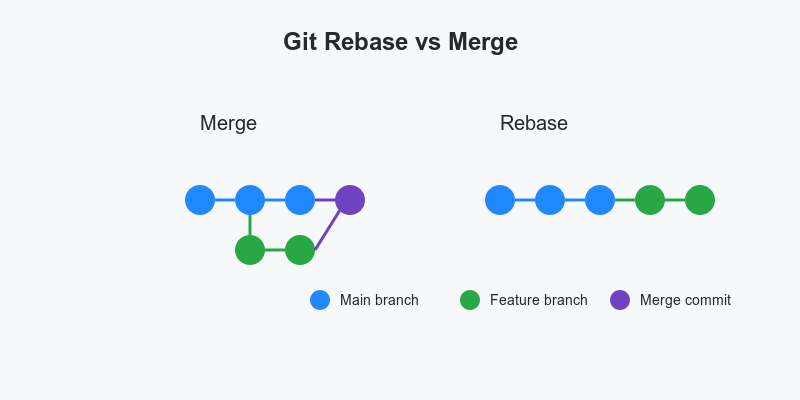Git Rebase vs. Git Merge: A Concise Guide
 Hossein Margani
Hossein Margani
Git, the ubiquitous version control system, offers two primary ways to integrate changes from different branches: git merge and git rebase. Both achieve the same outcome—combining code—but through different processes. Understanding these differences is key to effective collaboration.
git merge creates a new merge commit that combines the histories of two branches. This preserves the complete history of both branches, providing a comprehensive view of development. While simple, the resulting history can become complex in projects with frequent merging. Here's an example:
git checkout main
git merge feature-branch
git rebase, on the other hand, rewrites the project history by applying the commits from one branch onto another linearly. This results in a cleaner, more streamlined history, making it easier to follow the progression of changes. However, rewriting history is powerful but potentially disruptive, especially in collaborative settings; it's essential to use it with caution on shared branches.
git checkout feature-branch
git rebase main
git checkout main
git merge feature-branch
Consider a scenario where two developers work on separate features concurrently. git merge maintains both individual feature branches, demonstrating how these features developed independently, while git rebase integrates changes chronologically. The choice depends on prioritization; merging for clarity of changes or rebasing for a cleaner, linear history.
For more detailed information on rebasing and merging, use the official Git documentation. Understanding the nuances of these commands is critical for every software developer.
Subscribe to my newsletter
Read articles from Hossein Margani directly inside your inbox. Subscribe to the newsletter, and don't miss out.
Written by
